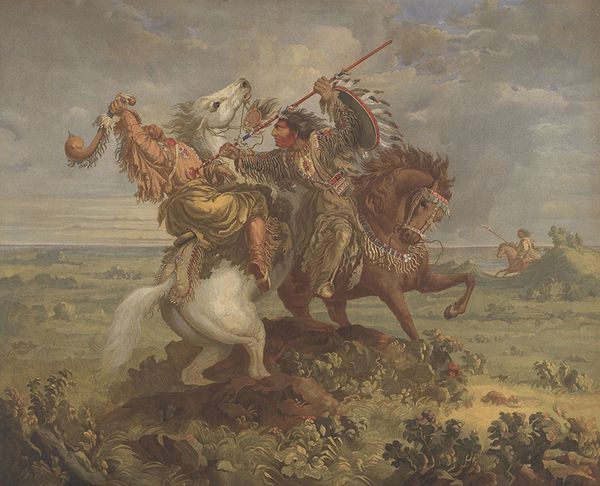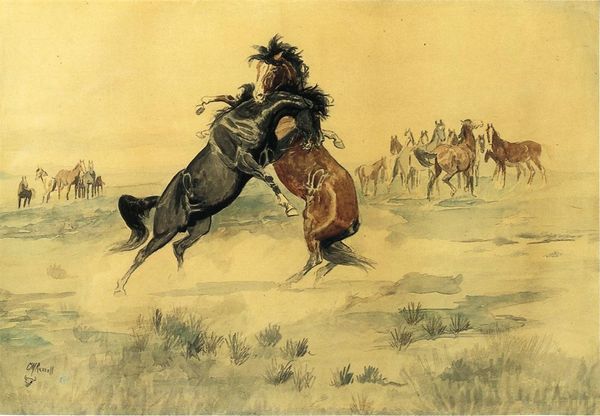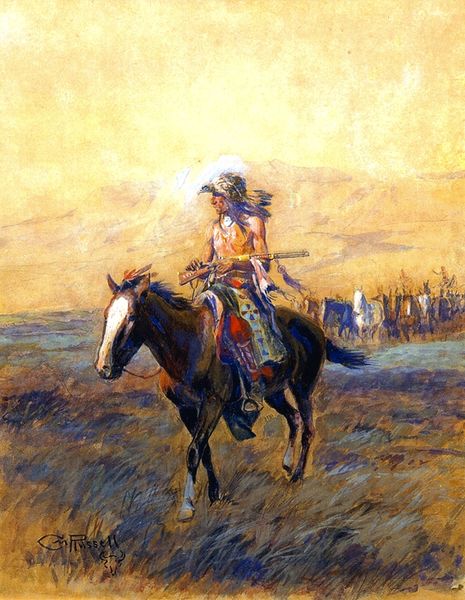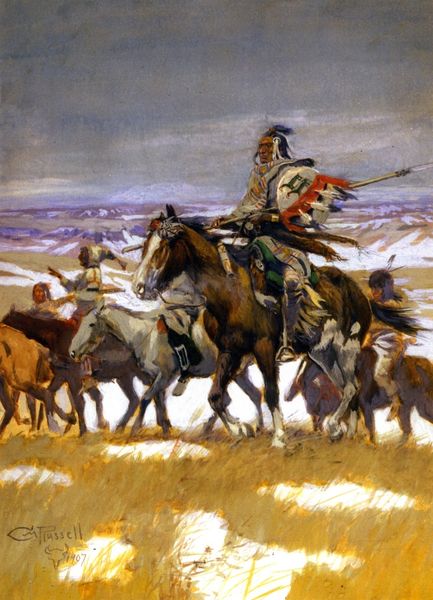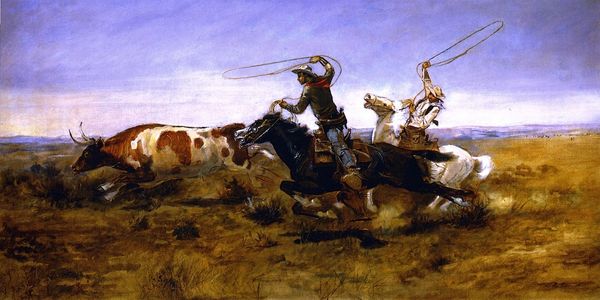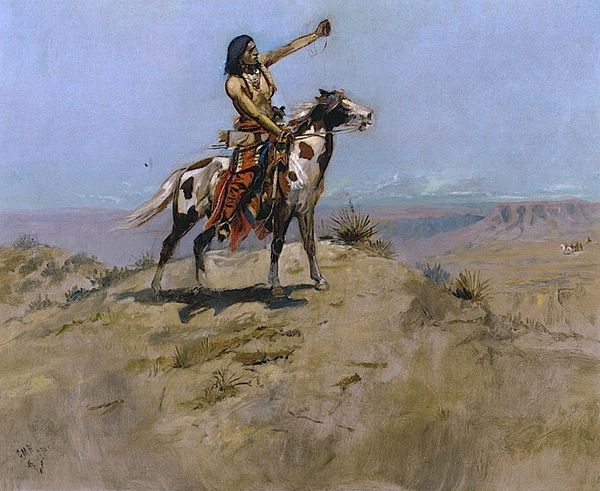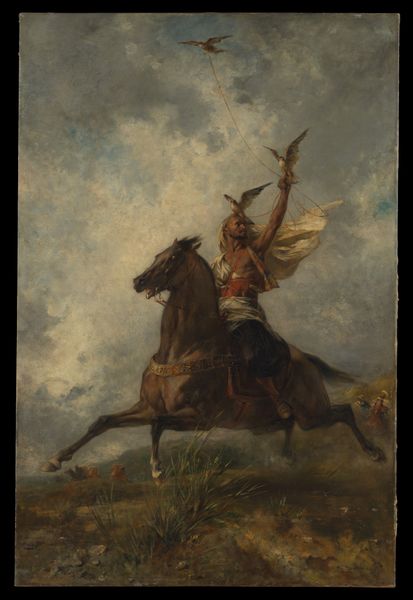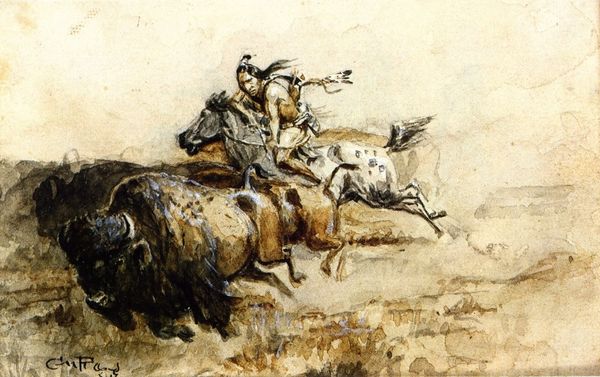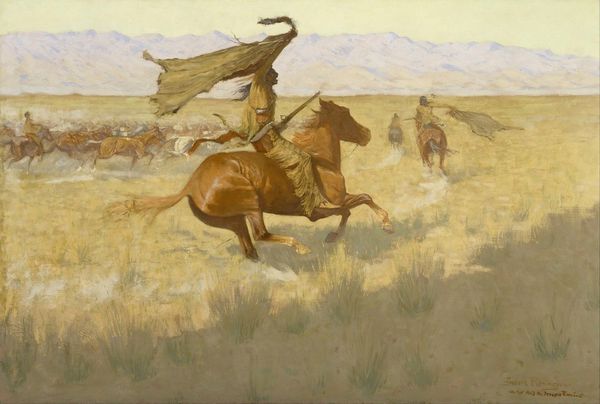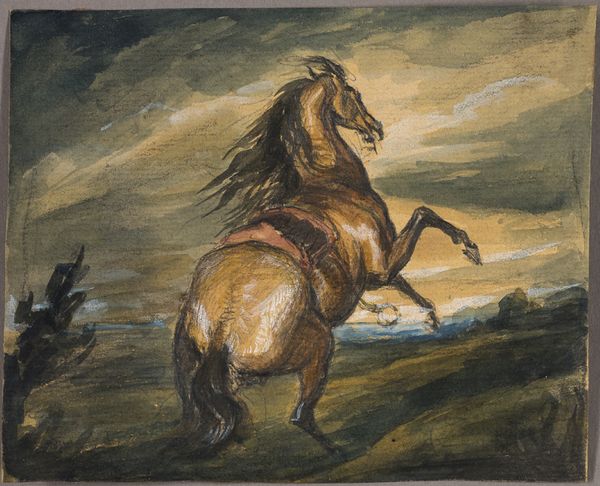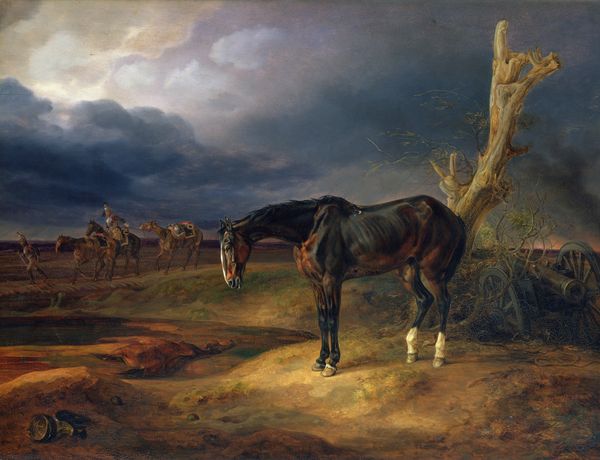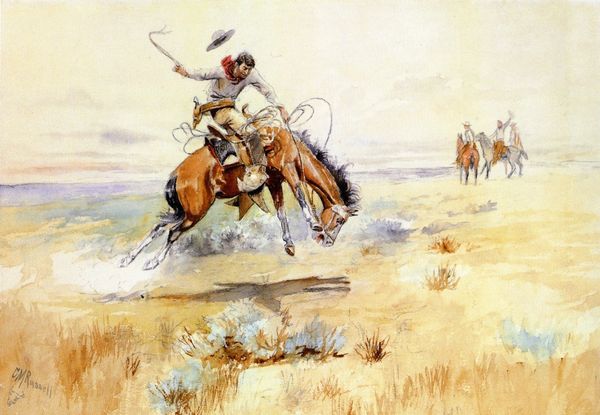
Copyright: Public Domain: Artvee
Curator: Standing before us is Albert Bierstadt’s study for “The Last of the Buffalo,” likely dating from around 1888. It’s rendered in oil and charcoal, primarily. Editor: Well, initially, a blur of motion. Raw, furious energy almost vibrating off the canvas. Is it a sandstorm, or pure adrenaline fueling this chase? Curator: Indeed. Given its historical context, the narrative implications are heavy. The painting addresses, quite explicitly, the decimation of the buffalo herds and the impact on Native American life, a direct consequence of westward expansion. Editor: Yes, but consider Bierstadt’s hand itself. It’s not detached commentary—this is a visceral reaction. You can almost feel the grit of the plains under the hooves, the desperation etched into the rider’s posture. I find a kind of… desperate beauty, a ferocious lament, even. Curator: It’s crucial to note that Bierstadt was working within a framework that largely romanticized the West, participating in the construction of a heroic, albeit flawed, narrative. Think of the economics of that production, too: paintings as commodities, feeding a market hungry for exotic landscapes. Editor: All true. And still, despite that layer of commodification, there's a spark of something rebellious. That figure on the horse is not some noble savage from a storybook; they’re raw, their existence in danger, and the skill with which this raw moment has been caught—it rings true for me. Curator: Certainly, Bierstadt's talent in capturing dramatic scenes is evident, but we should be cautious of solely focusing on his painterly skill. The real drama lies in the historical processes that led to the near extinction of the buffalo. Editor: Perhaps the truth resides in that friction. The beauty juxtaposed with the underlying brutality makes us question the whole romanticized myth, right? Curator: Precisely. By engaging with the production and the consumption surrounding "The Last of the Buffalo," we can better understand the complexities of American history and its representation. Editor: So, the skill is just the hook. The story beyond that is so much more complex than the eye lets on. Food for thought.
Comments
No comments
Be the first to comment and join the conversation on the ultimate creative platform.
